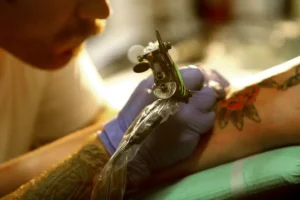
Unhealthy Alcohol Use in Adolescents and Adults] Those who screen positive should be evaluated for AUD using the Diagnostic and Statistical Manual of Mental Disorders, Fifth Edition (DMS-V) criteria. Each of these fee-based tools has a research base that shows its potential to help people cut down or quit drinking. Remember that changing long-standing patterns is hard, takes time, and requires repeated efforts.
- About 1 in 12 adults in the U.S. are believed to misuse alcohol or have an alcohol addiction.
- Those with moderate to severe alcohol use disorders generally require outside help to stop drinking.
- Remember, being proactive in identifying risk factors and implementing prevention strategies can make a significant difference in your life.
- If you have developed alcohol dependence and decide to quit drinking, you can expect to experience withdrawal symptoms.
- If your doctor thinks you need more support to stop drinking, they’ll likely refer you to a mental health provider, such as a counselor or therapist.
I’m In Recovery

Addiction recovery can involve addressing both physical and psychological health. Doctors may also prescribe certain medications to manage dependence and addiction. According to a 2021 research article, healthcare professionals often misunderstand them, which can lead to misdiagnosis. Joining a support group or engaging in therapy can be incredibly beneficial for your recovery journey. Participating in a group like Alcoholics Anonymous provides a strong network of peer support, allowing you to connect with others going through similar experiences.

Alcohol Withdrawal
Dependence refers to the body’s adaptation to a drug, leading to withdrawal symptoms, while addiction involves compulsive drug use despite negative consequences. The two types of drug dependence are physical dependence, where the body adapts to a drug causing withdrawal symptoms upon cessation, and psychological dependence, where there is a perceived need or craving for the drug. Addiction involves a powerful psychological component that drives individuals distinguish between alcohol abuse and alcoholism to continue using substances or engaging in behaviors despite the detrimental effects on their health, relationships, and daily life. The neurochemical changes not only fuel the compulsive nature of addiction but also make recovery a complex and challenging process. There are several organisations available in England to provide mutual aid for service users and their families. The largest and longest established such organisation is Alcoholics Anonymous.
Renewal Center for Ongoing Recovery
Dependence can occur with the use of certain medications, such as painkillers or antidepressants, even when taken as prescribed. It reflects a physiological adaptation, not necessarily a behavioral compulsion. Based on the information above, we can conclude that addiction and dependence are not the same, although they are often confused or used interchangeably. While both involve the use of substances and can coexist, they refer to different aspects of substance use. Similarly, a person who previously got high from any strain of marijuana might now need a more potent variety.
Difference Between Abuse and Dependence

Alcohol is implicated in relationship breakdown, domestic violence and poor parenting, including child neglect and abuse. It is estimated that over 1 million children are affected by parental alcohol misuse and up to 60% of child protection cases involve alcohol (Prime Minister’s Strategy Unit, 2003). Alcohol also contributes to unsafe sex and unplanned pregnancy, financial problems and homelessness.
The majority of agencies (70%) were community based and the remainder were residential, including inpatient units in the NHS, and residential rehabilitation programmes mainly provided by the non-statutory or private sector. Overall, approximately half of all alcohol services are provided by the non-statutory sector but are typically funded by the NHS or local authorities. Approximately one third of specialist alcohol services exclusively provide treatment for people with alcohol problems, but the majority (58%) provide services for both drug and alcohol misuse. Alcohol is excreted in urine, sweat and breath, but the main method of elimination from the body is by metabolism in the liver where it is converted to acetaldehyde and acetate. These metabolites are then excreted from the body, primarily in urine.
Addiction vs. dependence
Alcohol dependence and alcohol abuse were two designations previously recognized in the DSM-IV. While no longer separate diagnoses, it can be helpful to understand the differences between the two. «Dependence» refers to being unable to stop drinking without experiencing withdrawal symptoms while «abuse» refers to continuing to consume alcohol despite adverse consequences. Many symptoms can be managed at home, but moderate to severe withdrawal should be supervised by a healthcare professional and may require inpatient treatment. While drinking and alcohol-use disorders are relatively rare under the age of 10 years, the prevalence increases steeply from the teens to peak in the early 20s.
If you face withdrawal, it’s crucial to seek medical help, as the process can be risky without professional guidance. The former can lead to the latter, though, which is why it is so important to make the distinction between the two. Alcohol dependency is worse in many respects because it is much harder for people to quit after they become dependent. The condition is a disease, and many individuals who go through treatment for alcohol dependency often have to abstain from drinking completely in order to not fall back into these old patterns. However, because alcohol is a different type of substance (and its consumption is always legal as long as the individual is not endangering themselves or others), it is difficult to compare it directly to drug addiction.
It’s crucial to differentiate between addiction and physical dependence to avoid real-life severe consequences. Unlike addiction, dependence is primarily a biological response to the presence of a drug. The first category of costs is that of treating the medical consequences of alcohol misuse and treating alcohol misuse. The second category of health-related costs includes losses in productivity by workers who misuse alcohol. The third category of health-related costs is the loss to society because of premature deaths due to alcohol misuse.
By integrating various treatment methods such as medication, support groups, therapy, and the appropriate level of care, you can overcome alcohol abuse or dependence and embark on a path of recovery. The path may be challenging, but with dedication, resilience, and the assistance from experienced professionals at facilities like Sabino Recovery, you can achieve a fulfilling, alcohol-free life. When you stop consuming alcohol after a period of heavy drinking, your body may experience withdrawal syndrome, an array of physical and psychological symptoms. This is because alcohol has altered the normal balance of chemicals in your brain, and withdrawal occurs when the body tries to readjust to this imbalance. Symptoms can range from mild anxiety and shakes to more severe complications such as delirium tremens.
